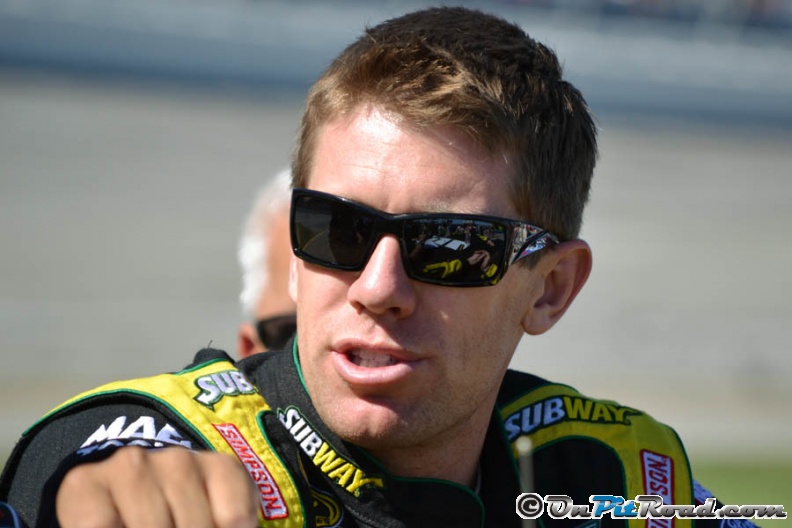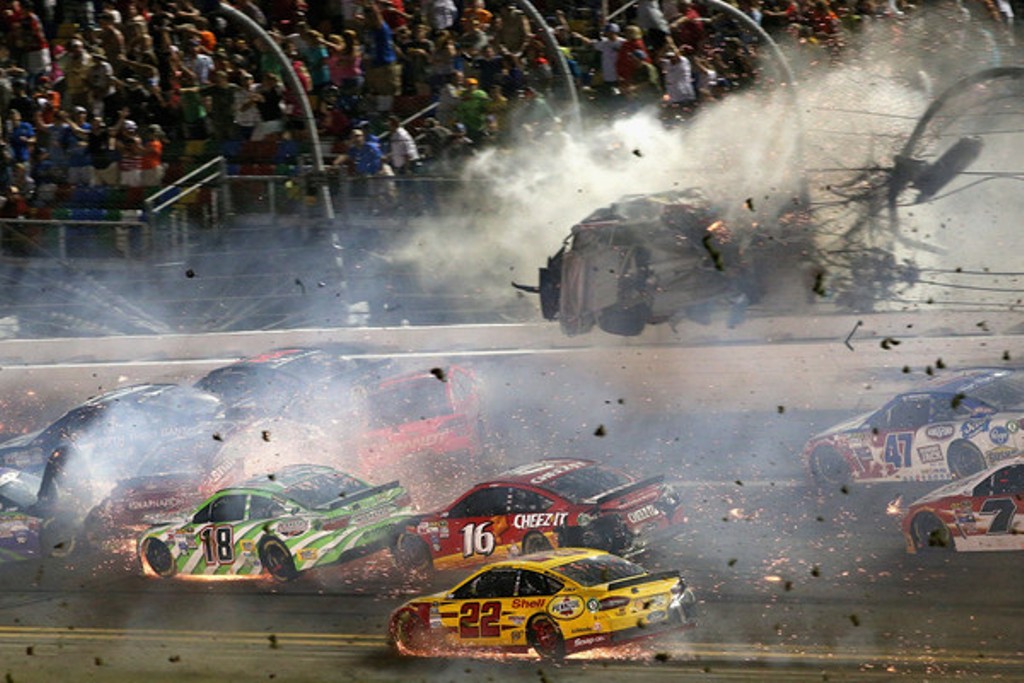Long time readers of my columns know that I am not a fan of restrictor-plate racing. It’s not for the reasons that most think of after this week’s chaos at the end of the Coke Zero 400 at Daytona International Speedway last Monday morning (that’s another story, for another day). It’s not because of Austin Dillon’s horrific crash that saw his No. 3 car launched into the catch fence just past the finish line at the conclusion of the race. It’s for reasons I will discuss below.
I have been involved in auto racing, at many levels, for over 30 years and one thing is certain, auto racing is a very dangerous sport. I accept that it’s potentially dangerous for participants, crews, officials, members of the media and fans. In fact, every time I enter a race track I sign a waiver absolving the track, sanctioning body and anyone else from liability for any injuries I might receive while there. Let’s face it, folks, there’s a reason why I, and everyone else, who enters the garage/pits/ fences has to sign these. It’s dangerous.
Why don’t I like restrictor-plate racing? It’s not racing when it’s almost impossible to pass the car in front of you. There’s little or no braking in the corners for the cars to turn better. The drivers simply mash the gas and go, all at the same speed! It’s a rolling traffic jam, bumper to bumper at 190 miles per hour. While it sounds exciting how long is it until almost the entire field is in a straight line, just knocking down the laps until the final laps? How many championship caliber drivers hang out for 120 laps running in the 34th -38th position, until it’s ‘go time’? Once that happens there’s yellow flags flying and a green, white, checkered flag finish. But perhaps the thing that really turned me off to restrictor-plate racing was when they televised the unedited in-car feeds during the Daytona 500 and I recall looking in and realizing that it wasn’t racing at all. They were riding around.
Lastly, I don’t like restrictor plate racing because of the millions of dollars in damage to race cars that happens at these races. When 16-17 Sprint Cup cars are involved in a wreck there’s a lot of dollars there, not just in the equipment but the man hours needed to prepare and repair them. As a businessman, I can’t help but ask myself, ‘Is it worth it?’
As far as safety is concerned, NASCAR has really stepped up their programs since Dale Earnhardt was killed in 2001. However, Earnhardt was the last of four drivers killed in on track incidents in 2000 and 2001. Cup driver Kenny Irwin died at New Hampshire Motor Speedway in July of 2000 during a practice session just as Adam Petty, son of Kyle and grandson of Richard had done just 11 weeks before. Only about 60 days later Tony Roper was killed in an accident during a race at Texas Motor Speedway during a truck race. Many of us forget these facts as we get caught up in the racing going on right in front of us. There’s always the danger factor that must be considered and I think we were just reminded of it early Monday morning.
Austin Dillon wasn’t injured seriously in the wreck and discussed it during a teleconference on Tuesday this week.
“I just remember getting launched up,” Dillon said, “and then the first violent part of the wreck was when we turned upside down. It just happened so quick, and I knew at that point I had already… it was going to be big. I tensed up and kind of just really gripped the wheel hard. When we hit the catch fence first, I didn’t realize kind of where I was. I knew the whole time where I was, but I didn’t know where I was on the track, if I was getting hit by a car or what it was because it happened so fast, obviously. As we came down, I was just kind of talking to myself the whole time, like you’re almost through it, you’re almost through it, hold on, hold on, and then I thought it was over, and then when Brad came through and hit us at the end, it was pretty hard, that last lick.”
Dillon then described what viewers on television and spectators at the track saw; crew members rushing from pit road to his aid. He continued saying “Shortly thereafter, I mean, it felt like no time that there was guys at my car. As soon as they got to the car I felt pretty comfortable there, there was people around that we were going to be okay. The biggest fear as a driver is probably fire would be the next thing you worry about, so the oil kind of running around the car at that point, I just wanted to get out. I told them I was okay, and worked my way out of the car and got away from it.”
After the race, there were numerous drivers that expressed their dissatisfaction with the situation regarding the danger to not only the drivers but the fans.
Dillon said, “For me I have to make my own opinion, first of all, of it, and I have a lot of respect for everybody at NASCAR and the drivers. Going through something like that, there’s other drivers that have gone through wrecks similar. This is probably one of the most violent ones, obviously, and I feel like my opinion was I’m here today talking to you guys, and right now my groin is a little sore, my tailbone is a little sore, but other than that, my head and my neck, which is the most important part to me, I have no headache, I have… my traps are like a little sore just from tightening up before the wreck, you know, making sure I was tight when I hit the car so I wasn’t too relaxed when I hit the fence.”
Dillon expressed his satisfaction with what NASCAR has done with safety and I tend to agree with him.
“I think it’s pretty impressive,” Dillon said “to see how far we’ve come after learning from other wrecks, the black box that NASCAR takes and looks at to see the impacts and how far we’ve come to change the different chassis bars in the car to strengthen the roof. The roof looked like the cage itself held up well. The catch fence did its job. It kicked things back into the track where we needed to.”
So, as we head to the Kentucky Speedway let’s be thankful there were no serious injuries and that we can have discussions about the racing, which over the years has changed significantly. I don’t offer any solutions about how we can change things at the super speedways and frankly, haven’t heard any reasonable ones from anyone, other than stopping the races at those tracks, and we all need to accept the fact that we will be racing at Daytona and Talladega for many, many years to come.







